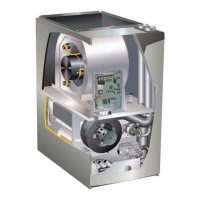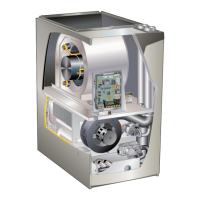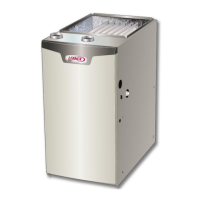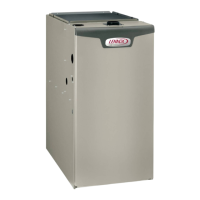Page 59
Testing of Non-Direct Vent Applications for Proper
Venting and Sucient Combustion Air
WARNING
CARBON MONOXIDE POISONING HAZARD!
Failure to follow the steps outlined below for each
appliance connected to the venting system being placed
into operation could result in carbon monoxide poisoning
or death.
The following steps shall be followed for each appliance
connected to the venting system being placed into
operation, while all other appliances connected to the
venting system are not in operation.
After the EL296DFV gas furnace has been started, the
following test should be conducted to ensure proper vent-
ing and sucient combustion air has been provided to the
EL296DFV as well as to other gas-red appliances which
are separately vented.
If a EL296DFV furnace replaces a Category I furnace
which was commonly vented with another gas appliance,
the size of the existing vent pipe for that gas appliance
must be checked. Without the heat of the original furnace
ue products, the existing vent pipe is probably oversized
for the single water heater or other appliance. The vent
should be checked for proper draw with the remaining ap-
pliance.
The test should be conducted while all appliances (both
in operation and those not in operation) are connected to
the venting system being tested. If the venting system has
been installed improperly, or if provisions have not been
made for sucient amounts of combustion air, corrections
must be made as outlined in the previous section.
1 - Seal any unused openings in the venting system.
2 - Visually inspect the venting system for proper size and
horizontal pitch. Determine there is no blockage or
restriction, leakage, corrosion, or other deciencies
which could cause an unsafe condition.
3 - To the extent that it is practical, close all building
doors and windows and all doors between the space
in which the appliances connected to the venting
system are located and other spaces of the building.
4 - Close replace dampers.
5 - Turn on clothes dryers and any appliances not
connected to the venting system. Turn on any
exhaust fans, such as range hoods and bathroom
exhausts, so they will operate at maximum speed.
Do not operate a summer exhaust fan.
6 - Follow the lighting instruction to place the appliance
being inspected into operation. Adjust thermostat so
appliance will operate continuously.
7 - Use the ame of match or candle to test for spillage
of ue gases at the draft hood relief opening after 5
minutes of main burner operation.
8 - If improper venting is observed during any of the
above tests, the venting system must be corrected
or sucient combustion/make-up air must be
provided. The venting system should be re-sized
to approach the minimum size as determined by
using the appropriate tables in appendix G in the
current standards of the National Fuel Gas Code
ANSI-Z223.1/NPFA 54 in the U.S.A., and the
appropriate Natural Gas and Propane appliances
venting sizing tables in the currentstandard of the
CSA-B149 Natural Gas and Propane Installation
Codes in Canada.
9 - After determining that each appliance remaining
connected to the common venting system properly
vents when tested as indicated in step 3, return
doors, windows, exhaust fans, replace dampers
and any other gas-burning appliance to their previous
condition of use.
Other Unit Adjustments
NOTE - See troubleshooting ow charts if any safety
switches are found to be open.
Primary Limit.
The primary limit is located on the heating compartment
vestibule panel. This limit is factory set and requires no
adjustment.
Flame Rollout Switches (Two)
These manually reset switches are located on the front of
the burner box.
Pressure Switch
The pressure switch is located in the heating compartment
on the cold end header box. This switch checks for proper
combustion air inducer operation before allowing ignition
trial. The switch is factory-set and must not be adjusted.
Temperature Rise
Place the unit into operation with a second-stage heating
demand. After supply and return air temperatures have
stabilized, check the temperature rise. If necessary, ad-
just the heating blower speed to maintain the temperature
rise within the range shown on the unit nameplate. See
TABLE 23 on page 55 for allowable circulation speeds.
Increase the blower speed to decrease the temperature
rise. Decrease the blower speed to increase the tempera-
ture rise. Failure to properly adjust the temperature rise
may cause erratic limit operation.
Electrical
1 - Check all wiring for loose connections.
2 - Check for the correct voltage at the furnace (furnace
operating). Correct voltage is 120VAC + 10%
3 - Check amp-draw on the blower motor with blower ac-
cess panel in place.
Motor Nameplate__________Actual__________
Exhaust and Air Intake Pipe
1 - Check exhaust and air intake connections for
tightness and to make sure there is no blockage.
2 - Is pressure switch closed? Obstructed exhaust pipe
will cause unit to shut o at pressure switch. Check
termination for blockages.
3 - Obstructed pipe or termination may cause rollout
switches to open. Reset manual ame rollout

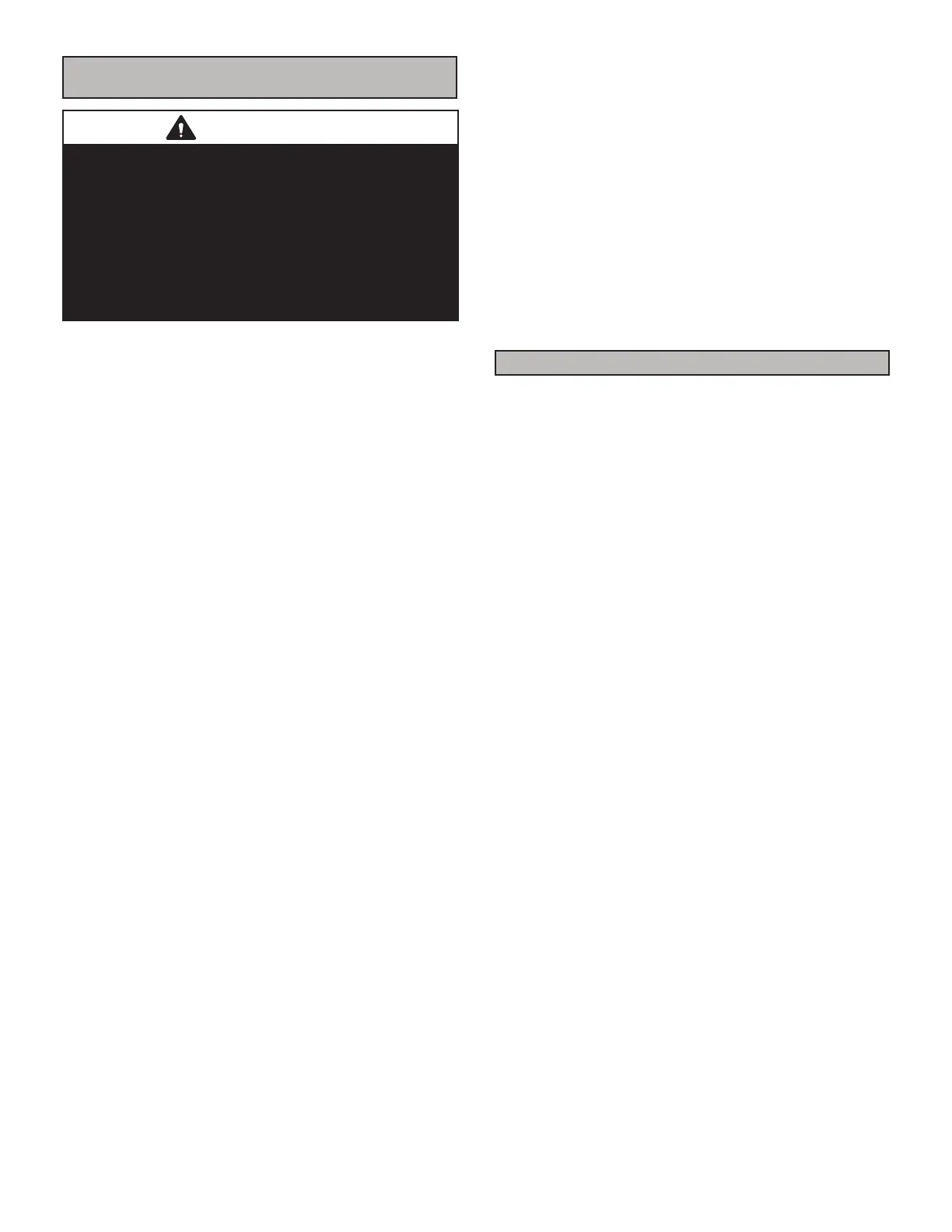